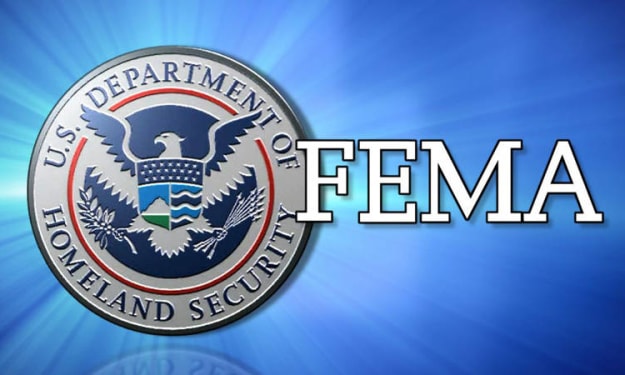
In 2010 President Obama stated, "The single biggest threat to U.S. security, both short-term, medium-term, and long-term, would be the possibility of a terrorist organization obtaining a nuclear weapon "(Mauroni, 2012). However, this has been a concern for decades, with the rise of transnational terrorism and missile capabilities to deploy nuclear materials. How prepared is the United States if a terrorist were to use a nuclear weapon on the homeland, and what changes could occur to the National Security Strategy (NSS) to increase overall security.
According to the NSS dated December 2017 by our 45th President Donald Trump, the United States' (U.S.) actions to deter nuclear attacks are broken down into three categories. The first is by sustaining U.S. nuclear weapons, keeping enough of a stockpile that adversaries would more than likely not attack, and our allies would aid if that deterrence failed. Next, modernize infrastructure and U.S. nuclear forces by ensuring a triad of scientific, engineering, and manufacturing a highly skilled workforce to develop, manufacture and deploy nuclear weapons. Lastly, maintain stable deterrence by discussing other state actors and building relationships that reduce the risk of nuclear attacks. While not allowing adversaries to use nuclear weapons as threats against the United States and its partners (Trump, 2017).
The U.S. is currently integrating digital technologies into its nuclear weapon systems, which is considered the first major upgrade in 40 years; once. Once this is complete, the nuclear triad will rely even heavier on computers (Dumbacher, 2020). This also opens the field of cyber-threats and hackers to obtain and hack nuclear materials from afar without the need to buy them on the black market. The U.S. has also increased its budget with nuclear weapons and nuclear warfare suggesting using offense in the form of defense (Statista Research Department, 2020).
Changes that the incoming Presidential administrator could make can be keeping up with the current ideas of integrating digital technologies into nuclear weapon systems. However, they should aim toward stand-alone networks or high-security networks to avoid intrusion. A good offense is a right defense approach that only works so far; the new administrator should continue to invest in missile defense systems to deter and avoid a nuclear attack. Currently, the Department of Defense has America's Nuclear Triad consisting of land, sea, and air weapon platforms to provide 24-hour deterrence from adversaries while delivering a decisive response (U.S. Department of Defense, 2021). Improving and expanding these programs within the department while maintaining a current stockpile of nuclear weapons could help deter or prevent a nuclear attack.
The incoming administrator should also continue to work with the United Nations on The Treaty on the Prohibition of nuclear weapons (TPNW), which prohibits the deployment of nuclear weapons on national territory and aids in assistance to individuals affected by nuclear testing (United Nations, 2021). Also, as of January 20, 2020, the New Start treaty with Russia is set to expire in 16 days. This treaty limits both the United States and Russia to 1,550 warheads each (Borger, 2021). The new administrator should focus on extending out the New Start treaty while discussing with Russia on reducing each other’s nuclear arsenal or aiding each other in making sure that other states do not gain the upper hand within the nuclear field.
Nuclear weapons are always going to be one of the most dangerous threats to not only the United States but the world in general. The new President should focus on keeping treaties in place to reduce nuclear weapons while working with allies to deter other terrorist groups from collecting nuclear materials. While making sure that digital nuclear technology is safe and secure to prevent the cyber-terrorist threat and focus on nuclear defenses, it is necessary to make an excellent defensive plan or strike a balance between offense and defense. In that case, these changes could put the United States in a better position and deter terrorist organizations from dealing with nuclear materials due to the procedures and policies in place.
References
Borger, J. (2021, January 11). Nuclear Stand-off: can Joe Biden avert a new arms race? Retrieved from The Guardian: https://www.theguardian.com/us-news/2021/jan/11/nuclear-stand-off-can-joe-biden-avert-a-new-arms-race
Dumbacher, E. &. (2020). U.S. Nuclear Modernization: Security & Policy Implications of Integrating Digital Technology. NTI.
Mauroni, A. (2012). Nuclear Terrorism: Are we prepared? Homeland Security Affairs, Vol 8. Is 1.
Statista Research Department. (2020). Nuclear Weapons- Statistics & Facts. Statistics.
Trump, D. (2017). National Security Strategy. Washington, DC: White House.
United Nations. (2021, January 21). Treaty on the prohibition of nuclear weapons. Retrieved from United Nations Office for Disarmament Affairs: https://www.un.org/disarmament/wmd/nuclear/tpnw/
U.S. Department of Defense. (2021, January 21). America's Nuclear Triad. Retrieved from U.S. Dept of Defense: https://www.defense.gov/Experience/Americas-Nuclear-Triad/#land
About the Creator
The Clarkbar84
My mind has stories forming all the time; My works are scattered within real life.
Kindle Stories: https://www.amazon.com/author/hunteralex
Kindle Vella: https://www.amazon.com/kindle-vella/story/B0BPRJVCV8






Comments
There are no comments for this story
Be the first to respond and start the conversation.